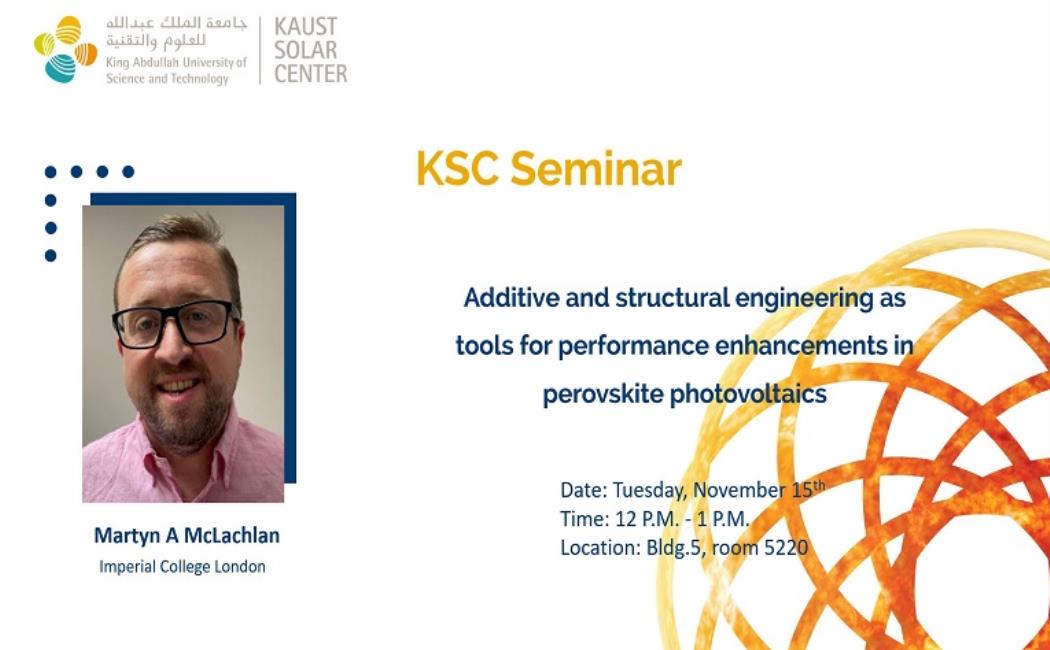

KSC SEMINARS

KSC Seminar: Additive and structural engineering as tools for performance enhancements in perovskite photovoltaics
About the Speaker:
Martyn A McLachlan
I joined the Department of Materials late in 2004 as a postdoctoral researcher working on and industrially funded project (Royal Dutch Shell) led by Professor David McComb. In 2007 I was then awarded a Royal Academy of Engineering Research Fellowship and eventually appointed as a Lecturer in 2013.This was followed by promotion to Senior Lecturer (2015) and then Reader (2017) and more recently to full Professor in 2020.
During my time at Imperial i have held a number of additional roles within the Department of Materials and across the College, these include course Director of our Advanced Materials Science and Engineering MSc and Director of Undergraduate Studies. I was also a College Warden for almost a decade and recently joined the Faculty of Engineering Team as Deputy Faculty Senior Tutor. I am affiliated with the Centre for Doctoral Training in Plastic Electronic Materials (PE-CDT) and my research engages strongly with the Centre for Processable Electronics (CPE) at Imperial.
In 2021 I replaced Professor Stephen Skinner as the Imperial Director of the Centre for Doctoral Training in the Advanced Characterisation of Materials (CDT-ACM), a joint venture between Imperial College, University College London and Trinity College Dublin.
Abstract of the Talk:
Over the past decade there has been a considerable shift in research for many emerging technologies towards adopting perovskite-inspired materials. This is particularly true in the photovoltaic research space where a plethora of compositionally tuned metal-halide species have emerged as high performing light absorbers capable of achieving performance metrics that were, until recently, almost unimaginable. One strategy for performance improvement is perovskite substitutional doping, which has resulted in the design and development tailor made photo- and electro-active materials. Still there remain some intrinsic challenges associated with improving lifetime and stability owing to numerous extrinsic factors including moisture, heat, bias, oxygen, and light resulting in perovskite degradation. With a view to addressing some of the inherent limitations of these fascinating materials additive engineering has been developed as one strategy whereby the incorporation of low concentrations of additives can result in significant enhancements of stability. Here I outline some recent results focussing on additive engineering using a variety of organic small molecules, including naturally occurring species. We focus on how these species improve photovoltaic performance and correlate such with measured modulations in microstructure and morphology. Using a range of surface sensitive analytical tools, we probe additive location and use our findings to explain key relationships between structure, composition, and performance of additive engineered perovskite solar cells. In the second part of my presentation will describe strategies developed that allow precise control of active layer grain size, crystallinity and defect density – demonstrating a novel methodology that is widely applicable to a range of perovskite compositions again focussing on structural modifications that are directed through judicious control of processing condition
Schedule
Tuesday, November 15, 2022, from 12:00 PM – 1:00 PM
Location
Building 5, room 5220
For more information, please email: ksc@kaust.edu.sa